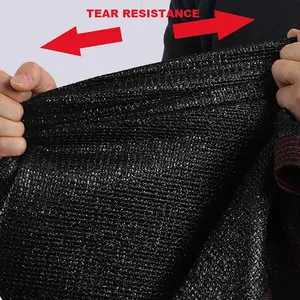(15376 products available)



















































































































































































































Trellis netting has many types, each suitable for certain plants' growth habits. These types include plastic trellis netting, extending the growing season; garden trellis netting, which supports plants and is easy to set up and take down; flexible trellis netting, which is well-suited for use in greenhouses; heavy-duty trellis netting, which is used to support large crops; stretch trellis netting, which provides extra tension to support growing fruits and flowers; and last, butterfly trellis netting, which has a distinctive butterfly design that helps with pollination.
Here is a breakdown of the types:
Trellis netting is highly durable and can withstand long-term growing conditions. This includes resistance to environmental factors like UV rays, moisture, and temperature changes. Trellis netting can last from a single growing season to several years, depending on the type of material and exposure to the elements. Plastic trellis netting is often UV-treated to prevent degradation from sunlight. Metal or wire mesh may last even longer, providing a rigid support structure. With proper storage and care, trellis netting can be reused multiple times.
The planting guide for using trellis netting includes selecting the right netting material, preparing the planting area, and setting up the trellis. Choosing a location with sufficient sunlight and good soil for the plants is key. Preparing the soil involves removing weeds and adding fertilizer to ensure healthy plant growth. The guide expands on these topics:
Depending on the netting type and conditions under which it is used, trellis netting can be very reusable. In general, trellis netting made of materials like high-density polyethylene (HDPE) or nylon can often be reused for several growing seasons. Some netting, such as organic cotton or jute, may break down more quickly due to environmental exposure, but even these can last a season or two with proper care.
When selecting trellis netting, buyers should consider factors such as the netting material, mesh size, and intended use. In particular, plastic trellis netting is durable and often UV-treated for outdoor use. Metal trellis netting is ideal for supporting heavy crops due to its strength and long lifespan. Garden trellis netting is commonly used for home gardening and is easy to install and remove. Flexible trellis netting can mold to various shapes, making it suitable for vertical gardening. Stretch trellis netting provides extra tension and can help support growing fruits and flowers. Finally, butterfly trellis netting features a unique butterfly design that can help support pollinators.", "Buyers also need to keep in mind the material used to make the trellis netting. Plastic netting is often used for outdoor growing and is weather-resistant. This is because it does not rust and can be easily washed. Metal trellis netting is also weather-resistant and provides strong support. Biodegradable netting, often made from natural fibers like jute or sisal, is designed to decompose after one growing season, returning nutrients to the soil. The mesh size should match the plant type and growth habit. Smaller mesh sizes support lighter plants, while larger mesh sizes allow bigger plants more room to grow. Buyers should also consider how easy it would be for them to install or remove the netting as well as the cost in terms of both long-term and short-term benefits. Once buyers assess all these factors, they can proceed to place an order in bulk while taking into consideration the level of demand and storage space for the product as well as shipping costs and payment options. Buyers should also not forget to read other users' reviews and ratings to check for the netting quality and reliability and, most importantly, the netting netting size they might need in relation to the growth size of various plants they might want to house.
A1: The netting supports the plants, helps them grow in an organized manner, and makes better space utilization.
A2: It maximizes space by encouraging vertical growth, reduces pest exposure by keeping fruits off the ground, and improves air circulation.
A3: Polyester or heavy-duty nylon netting lasts 3-5 years. Steel netting lasts 10+ years. Biodegradable netting lasts 1 year.
A4: Special designs like butterfly trellis netting include openings that help support pollinators by providing landing areas.
A5: Yes, most durable materials like plastic, metal, or nylon can be reused for multiple growing seasons if properly maintained.